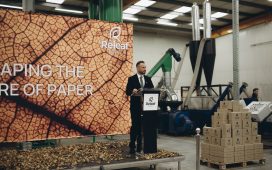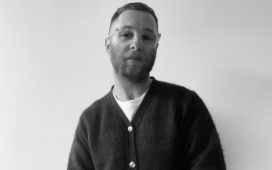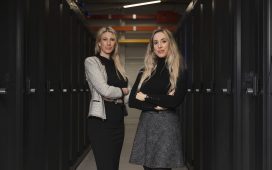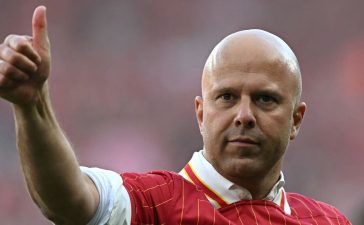As employee expectations rapidly evolved in the last few years, flexibility became a cornerstone. And for HR tech platform provider Safeguard Global, that reality has fueled a philosophy it extends not only to its workforce, but which is also baked into its tech: Employees should be able to “work in any way.”
It’s an idea relatively new to most employers, and largely focused on remote and hybrid setups in the post-pandemic world of work. However, Safeguard Global—with 1,500 clients worldwide that leverage the company’s solution for hiring, payroll, onboarding and more—has long recognized the value of distributed work, with many global employees working remote or hybrid pre-pandemic; the entire company moved permanently in that direction in 2020.
Now, it’s helping clients embrace the wider, still-emerging definition of flexibility—such as the incorporation of contingent and contract workers—which will define the future of work, says Chief People Officer Katherine Loranger.
Loranger took on the role in 2018 after three years in another HR leadership position with the company; prior to that, she held HR leadership roles at organizations including Mood Media North America, Lammes Candies and First California Bank. At Safeguard, she has led the people strategy throughout three global acquisitions, as the company has grown rapidly from 300 employees in five countries to nearly 2,000 in more than 50 countries, in just the last eight years.
Loranger recently spoke with HRE about what drives HR success through an acquisition and what people challenges and opportunities lie ahead for both Safeguard and the HR industry in the coming year.

 Loranger: If you are newly acquired individual, you’re probably pretty nervous because it’s a completely different relationship dynamic than a new hire. You probably didn’t choose to come over into the new organization, you don’t know the certainty of your job, you don’t know what you’re going to be doing or who you’re going to be working with. It’s really important that, through our communication and as we’re working with our managers, we help these employees really feel welcome. They need to know where to turn for support and that they have a path to their future.
Loranger: If you are newly acquired individual, you’re probably pretty nervous because it’s a completely different relationship dynamic than a new hire. You probably didn’t choose to come over into the new organization, you don’t know the certainty of your job, you don’t know what you’re going to be doing or who you’re going to be working with. It’s really important that, through our communication and as we’re working with our managers, we help these employees really feel welcome. They need to know where to turn for support and that they have a path to their future.
They’re going to have to integrate into a new team, learn new processes, new ways of working. They’re going to work with new people, and they’re probably going to have a new goal or strategy around what their job is. It’s really important that HR take the time to work with line managers to make sure that they’re supported during that process and that they understand what these people are going through. We also have to ensure that we are respecting the expertise those individuals bring to their jobs. The last thing that we want to do is make them feel devalued or disrespected because they’re really the reason that we acquire a business: It’s about the people.
The other thing that I think is really helpful is to make sure that the people coming in understand that they are valued. We like to include them in building out the integration plan and collaborating on that plan. It’s not about “You are going to come learn our practices and adopt our way of working. Period.” It’s about, “Let’s learn how each of us works, and then—together—let’s pick the best go-forward strategy.” Generally, people are much more accepting of change if they’re part of the change and they feel like their opinions matter.
See also: In mergers and acquisitions, 5 ways to center employees
HRE: How would you describe the culture at Safeguard?
Loranger: I think it’s very closely tied to our value system, and I see that every day. As a leadership team, we make sure that the decisions we make are aligned with those values.
I think if you asked anybody in our business what our No. 1 value would be, they would say caring. We really want people to feel respected, cared for and feel valued, so that is a big piece of our business.
We’re really focused on innovation and hearing new ideas and empowering people to move forward with those ideas to create value for the business. And, ultimately, fun is the other really big value for us. We try not to take ourselves too seriously. We want to make sure that, along the way, we develop good relationships, enjoy each other and that everyone feels secure and welcome and comfortable in our environment.
HRE: Speaking of innovation, given that Safeguard is in the tech space, where do you see the most opportunity for HR leaders to leverage technology to advance their people strategy?
Loranger: We’re all learning as we go a bit on this one, and it is really exciting.
I think there are a million areas. The one that I see most directly in front of us is opportunity within our recruitment and selection process. We’re a global organization, and we hire all over the world, so that can make recruiting and selection a challenge.
A few things that I think AI is going to do for us—and some we’re leveraging already—is matching job opportunities to candidates who have applied for different roles, for example. Technology is making it much easier for us to look across a broad resume base and say, “Well, you might not be a match for this role, but there’s this other role you didn’t apply for. Let’s look at that one.”
There’s certainly also the ability to get a good picture of candidate skills through technology, which is much faster, much more efficient and also a lot more fair. So, we’re looking forward to putting more things like that into place.
We’re global, we’re location-agnostic, and that’s been great for us because it enriches our diversity, but there are also challenges because, when there aren’t geographical restrictions, it can be very difficult to recruit. So, the question is, where do I look for talent? It’s a question we’ve never really had before, so that’s where I’m hoping technology, and AI specifically, can really bridge that gap.
One thing we’re already doing is using technology to pinpoint locations geographically where there are certain high levels of skill sets so that we know these are good areas for us to center on for our recruitment and our advertising. Rather than take a shotgun approach, we can actually dive in and focus just on that one area and have a lot higher recruiting success a lot faster.
Then, of course, when it comes to administrative work, AI is really invaluable. It saves us tons of precious time. Anything that lets us streamline HR operations and put more of our time into working with people, that’s a big win for us.
HRE: Looking back at 2023, what would you cite as Safeguard’s greatest HR win so far?
Loranger: I think one of the things that I’m most proud of this year was really solidifying our employer branding strategy. We’ve—for the past few years—been what we call a “work in any way” organization. We want to be people-centric, we want people’s lives and work to be integrated versus them working their lives around their job. That’s something that we started to do as soon as people went fully remote. And we’ve allowed people to stay remote or hybrid; they can have access to an office if they choose but most people choose to be remote.
The majority of the time it allows them to enhance their own life, find their own balance and be more productive and innovative. That’s really worked for us. And then, in turn, that’s allowed us to do the global hiring component of it as well and make sure that we’re bringing the best people in from anywhere in the world.
So, we took all those things that we were already doing and decided to focus in and reflect on that a bit. We formalized that into a real value proposition that we could define and that we could make sustainable.
That also allowed us to communicate that vision and that way of working outside the business, so that as we recruit for talent, those candidates can understand who we are and what our value proposition is for them. They’re able to make a better choice by coming to Safeguard, and we can also attract some of the best talent in the world that way.
HRE: What would you say drives your own engagement in your work?
Loranger: HR is an interesting thing because we’re not doing the building, the selling, the servicing of products, we’re not doing the accounting of the finances. But I’ve always described HR as being a catalyst. I hearken back to my science classes, where a catalyst is really an agent that comes in and speeds a reaction along.
We help the business do things better, and that’s really where I get a lot of engagement out of it: helping improve processes and improve organizations. We can do that by making sure that we have the right talent in the roles. We can do that by enhancing people’s skill sets. We can help managers create efficient organizations. We can help people better communicate. All of those things contribute to the success of the business. We make things better.
HRE: And to make that happen, what are the skills that you personally have sharpened throughout your career?
Loranger: First of all, in HR you have to work in terms of outcomes—starting with the end in mind—and that’s not always the way that new HR professionals would tackle the role. A lot of times, we come into an HR role and we have a set of tasks we need to do and there’s a start to finish. We aren’t always trained early in our careers to think about things in terms of ROI—but in everything that we do, we have to learn how to show the value of what we’re building and what our influence is.
The second thing is finding your voice. I don’t think that HR should really stay in their lane. The great thing that is so much fun about this profession is that you can touch every piece of the business and you can be as involved as you want to be.
I’m very fortunate that, because of the business that we’re in, my team gets to actually help develop and give feedback on new products and services that we’re offering because we’re the target audience for it, which is so much fun for us. It’s not a traditional HR function, but it’s a great way to contribute to the business.
Along with that, you have to understand the business itself. In order to contribute and have that voice, you have to understand the different parts of the business, what you do, how the business works, how the money works and, by doing that, you can develop a respect—so that, when you speak, people will listen. And then, hopefully, we can affect some of that influence and change.











